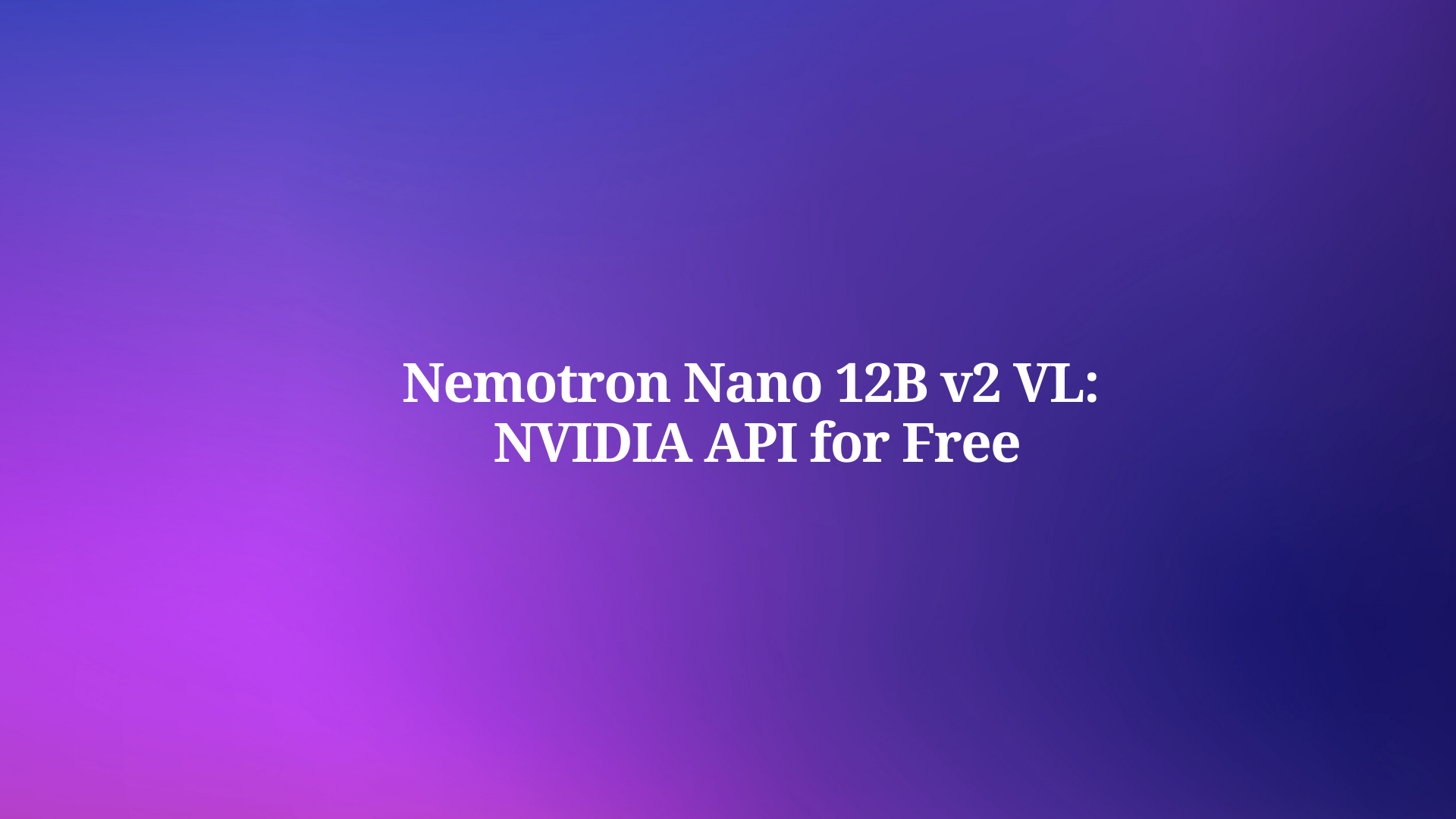Developers and automation enthusiasts often seek cost-effective ways to host workflow tools like n8n, the open-source automation platform that connects apps and services seamlessly. Fortunately, Hugging Face Spaces offers a robust free tier with 2 vCPU, 16 GB RAM, and 50 GB disk space, enabling you to deploy n8n without incurring expenses or managing complex infrastructure. This guide walks you through the entire process, from setting up a Supabase database to configuring environment variables and troubleshooting common issues.
Why Choose Hugging Face Spaces for Free n8n Deployment?
Hugging Face Spaces revolutionizes how developers host machine learning models and applications, but its versatility extends to workflow automation tools like n8n. Unlike traditional VPS providers that charge for bandwidth or storage, Hugging Face provides a generous free tier that supports persistent deployments. Consequently, you avoid the overhead of Docker orchestration or server provisioning, focusing instead on workflow logic.
Furthermore, n8n thrives in this environment because it requires minimal resources for most personal or small-team use cases. With built-in support for PostgreSQL databases, you pair it effortlessly with free services like Supabase, ensuring data persistence across sessions. However, Spaces enter a sleep mode after 48 hours of inactivity, which we address later with proactive strategies.
Deploying on Hugging Face enhances discoverability. Your space URL, such as https://yourusername-n8n.hf.space, becomes a shareable asset that search engines index quickly. Additionally, integrating n8n workflows for content automation—think RSS feeds to blog posts—positions your site higher in relevant queries. Thus, this setup not only saves costs but also amplifies your online presence.
In summary, Hugging Face Spaces deliver scalability and simplicity, making them ideal for developers optimizing for "deploy n8n free" searches. Next, we prepare the foundational database layer.
Prerequisites: Essential Accounts and Tools for n8n Deployment
Before you initiate the deployment, gather the necessary accounts and generate secure credentials. This preparation phase ensures smooth execution and minimizes errors during configuration.
First, create a free Hugging Face account at huggingface.co/join. Select a memorable profile name, as it forms part of your deployment URL (e.g., yourprofile-n8n.hf.space). Verify your email to unlock Space creation privileges.
Second, sign up for Supabase at supabase.com/dashboard/sign-up. Supabase furnishes a managed PostgreSQL instance with 500 MB storage and unlimited API requests on the free plan—perfect for n8n's workflow data. During signup, note your database password securely, as you will not recover it easily.
Once logged into Supabase, create a new project. Name it descriptively, like "n8n-prod-db," and set a strong password. Wait for the project to initialize, which typically takes 2-3 minutes. Then, navigate to the "Connect" section in your project dashboard.
Here, select the SQLAlchemy connection string format under the "Transaction pooler" for optimal performance with n8n. Extract these key details:
- Host: The server endpoint (e.g.,
db.yourproject.supabase.co). - Port: Use 6543 for pooled connections to handle concurrent queries efficiently.
- User: Your database username (e.g.,
postgres). - Database Name: The project-specific DB name (e.g.,
postgres). - Password: The one you set during project creation.
Store these in a secure note-taking app, such as a password manager, to avoid exposure.
Additionally, generate an encryption key for n8n's sensitive data handling. Open your terminal and run:
openssl rand -base64 32
This command produces a 32-byte random string, like aXNDkPqW3mZ8vL5rT7uY2bN4jH6kM9pQ1sE0wR3tF2yG. Copy it verbatim for later use.
Finally, familiarize yourself with n8n's basics if you're new. Install the desktop version temporarily via npm install -g n8n to test workflows locally, ensuring compatibility. With these prerequisites in place, you streamline the deployment, reducing potential downtime.
Transitioning seamlessly, let's configure the Supabase database to support n8n's schema requirements.
Setting Up Supabase PostgreSQL: The Backbone for Persistent n8n Workflows
Supabase simplifies database management by abstracting PostgreSQL complexities, yet you must configure it precisely for n8n integration. n8n relies on PostgreSQL for storing workflows, executions, and credentials, so a misstep here leads to initialization failures.
Begin by accessing your Supabase project dashboard. Click "SQL Editor" to run initialization queries. n8n expects specific tables and indexes for optimal performance; however, Supabase auto-creates these upon first connection if you enable row-level security (RLS) judiciously.
To enhance security, enable RLS on core tables like workflow_entity and execution_entity. Execute this SQL snippet in the editor:
-- Enable RLS on key tables
ALTER TABLE workflow_entity ENABLE ROW LEVEL SECURITY;
ALTER TABLE execution_entity ENABLE ROW LEVEL SECURITY;
ALTER TABLE credentials_entity ENABLE ROW LEVEL SECURITY;
-- Create a policy for authenticated access (Supabase handles auth via JWT)
CREATE POLICY "Users can view own workflows" ON workflow_entity
FOR ALL USING (auth.uid() = user_id);
-- Similar policies for other entities
CREATE POLICY "Users can manage own executions" ON execution_entity
FOR ALL USING (auth.uid() = created_by_id);
Save and run the query. These policies prevent unauthorized access, aligning with n8n's multi-user capabilities.
Next, configure connection pooling. In Supabase settings, toggle the transaction pooler to "On" under Database > Connection Pooling. This mode uses port 6543, distributing load across n8n's concurrent webhook triggers. Test the connection using a tool like pgAdmin or Supabase's built-in client:
psql "postgresql://postgres:[YOUR_PASSWORD]@db.yourproject.supabase.co:6543/postgres"
If successful, you see the prompt postgres=#. Run \dt to list tables, confirming an empty schema ready for n8n.
For SEO optimization in your workflows, consider adding custom metadata tables. For instance, store SEO keywords per workflow:
CREATE TABLE seo_metadata (
id SERIAL PRIMARY KEY,
workflow_id INTEGER REFERENCES workflow_entity(id),
keywords TEXT[],
title VARCHAR(255),
description TEXT
);
This extension allows n8n to automate meta tag generation for blogs, boosting search rankings.
Additionally, monitor usage via Supabase's analytics dashboard. The free tier caps at 50,000 monthly active rows, ample for 100+ workflows. If you approach limits, Supabase alerts you proactively.
With the database fortified, proceed to duplicating the Hugging Face Space—your gateway to a live n8n instance.
Step-by-Step Deployment: Duplicating and Configuring Your n8n Space on Hugging Face
Now, you execute the core deployment. Hugging Face's "Duplicate this Space" feature clones a pre-configured n8n template, accelerating setup to under 10 minutes.
Navigate to the template Space at huggingface.co/spaces/tomowang/n8n. Click the prominent "Duplicate this Space" button. This action forks the repository, including Dockerfile, app.py (for Streamlit-like serving), and n8n binaries.
In the duplication dialog, specify:
- Space Name: Enter
n8nexactly to match URL expectations (e.g.,yourprofile-n8n.hf.space). Deviations cause 404 errors. - Visibility: Select "Public" to enable immediate access. Private Spaces restrict embedding and trigger authentication loops.
- Hardware: Stick with the free CPU basic (2 vCPU, 16 GB RAM) unless scaling demands GPU.
Next, configure environment variables under the "Variables and Secrets" tab. These parameters drive n8n's runtime behavior. Populate the table as follows:
| Variable | Value/Example | Description |
|---|---|---|
DB_POSTGRESDB_PASSWORD |
Your Supabase DB password (e.g., s3cur3P@ssw0rd) |
Authenticates database access. Mark as secret. |
DB_POSTGRESDB_USER |
Supabase user (e.g., postgres) |
Database username for connections. |
DB_POSTGRESDB_HOST |
Supabase host (e.g., db.yourproject.supabase.co) |
Server endpoint. |
DB_POSTGRESDB_PORT |
6543 | Pooled port for high availability. |
DB_POSTGRESDB_DATABASE |
postgres |
Default database name. |
N8N_ENCRYPTION_KEY |
Your generated key (e.g., aXNDkPqW3mZ8vL5rT7uY2bN4jH6kM9pQ1sE0wR3tF2yG) |
Encrypts credentials and sensitive data. |
WEBHOOK_URL |
https://yourprofile-n8n.hf.space/ |
Base URL for incoming webhooks. Include trailing slash. |
N8N_EDITOR_BASE_URL |
https://yourprofile-n8n.hf.space/ |
UI access point; matches webhook for consistency. |
N8N_VERSION |
stable or specific (e.g., 1.0.0) |
Pins n8n release; auto-restarts on change. |
GENERIC_TIMEZONE |
UTC or America/New_York |
Sets workflow timestamps. |
TZ |
Matches GENERIC_TIMEZONE |
System timezone override. |
NODE_ENV |
production |
Enables optimizations and security headers. |
Mark sensitive variables (password, key) as secrets to encrypt them in the repo. Click "Duplicate Space" to trigger the build. Hugging Face compiles the Docker image, installs dependencies (Node.js, n8n), and initializes the database—monitor progress in the "Settings" tab.
Upon completion (5-10 minutes), access your instance at the N8N_EDITOR_BASE_URL. You encounter n8n's intuitive dashboard, prompting owner account setup. Create credentials with a strong password, enabling email notifications if desired.
To verify, activate a test workflow: Connect a cron node to a Slack notifier. Execute it manually; check Supabase logs for insertion. Success confirms end-to-end functionality.
For SEO, embed meta tags in your Space's index.html if customizing the UI:
<meta name="description" content="Free n8n automation on Hugging Face Spaces">
<meta name="keywords" content="n8n deployment, free workflow automation, Hugging Face tutorial">
This practice improves crawlability. With deployment complete, optimize for reliability.
Configuring Webhooks and OAuth: Enabling Secure Integrations in Your n8n Instance
Post-deployment, you integrate n8n with external services via webhooks and OAuth, critical for real-world automations like API syncing or social posting. Misconfiguration here disrupts flows, so follow these precise steps.
Start with webhooks. In n8n, add a Webhook node to a workflow and set the HTTP method to POST. The production URL auto-populates from WEBHOOK_URL, e.g., https://yourprofile-n8n.hf.space/webhook/abc123. Test by curling a payload:
curl -X POST https://yourprofile-n8n.hf.space/webhook/abc123 \
-H "Content-Type: application/json" \
-d '{"test": "data"}'
Monitor the execution log; successful receipt triggers downstream nodes. Now, tackle OAuth for services like Google Sheets or Discord. n8n's credential manager requires redirect URIs matching your Space. For Google:
- Visit console.cloud.google.com and create a new OAuth 2.0 client ID.
- Set authorized redirect URIs to
https://yourprofile-n8n.hf.space/rest/oauth2-credential/callback. - In n8n, add a Google credential, inputting Client ID/Secret.
- Authorize; n8n handles token refresh via Supabase storage.
Repeat for Discord: Redirect URI mirrors the above, scoped to bot and applications.commands. Avoid reusing cloud credentials—Hugging Face's domain differs, invalidating callbacks.
Troubleshoot via browser dev tools: Inspect network tabs for 302 redirects or 401 errors. Adjust N8N_OAUTH_REDIRECT_URL if needed, though the base URL suffices.
These configurations empower secure, scalable integrations, ensuring your n8n deployment handles production traffic effectively.
Preventing Sleep Mode and Ensuring 24/7 Uptime for n8n on Hugging Face
Hugging Face Spaces sleep after 48 hours of inactivity, pausing n8n and breaking scheduled workflows. You mitigate this actively with automated pings.
Implement a self-pinging workflow in n8n: Schedule a cron node every 24 hours to HTTP GET your own WEBHOOK_URL/ping. This endpoint, added via a simple Express route in your Space's app.py, responds with 200 OK, signaling activity.
For robustness, integrate GitHub Actions. Create a .github/workflows/keep-alive.yml in your Space repo:
name: Keep Alive
on:
schedule:
- cron: '0 */12 * * *' # Every 12 hours
workflow_dispatch:
jobs:
ping:
runs-on: ubuntu-latest
steps:
- name: Ping Space
run: curl https://yourprofile-n8n.hf.space/ping
Commit and push; Actions runs server-side, bypassing sleep. Monitor via GitHub notifications.
Alternatively, use UptimeRobot's free tier to ping your URL every 5 minutes. This external service ensures wakefulness without internal workflows.
Troubleshooting Common Issues: Resolving Deployment Hiccups Efficiently
Even with meticulous setup, issues arise. You diagnose and resolve them systematically using Hugging Face logs.
Issue 1: 404 Error on Access. Cause: Mismatched Space name. Solution: In Settings > General, rename to "n8n" and rebuild. Public visibility fixes embedding blocks.
Issue 2: "Preparing Space" Stuck. Cause: Build failure, often from invalid env vars. Solution: Check build logs for syntax errors (e.g., unescaped passwords). Correct and duplicate anew.
Issue 3: Database Connection Lost. Cause: Incorrect Supabase creds or port. Solution: Validate with psql test. Update port to 6543; restart Space.
Issue 4: OAuth Failures. Cause: Wrong redirect URI. Solution: Recreate credentials with exact hf.space callback. Clear browser cache.
Issue 5: Helmet Security Headers Blocking Iframe. Cause: Production mode enforces X-Frame-Options: sameorigin. Solution: Set NODE_ENV=development temporarily, or fork the template to relax headers in Dockerfile:
ENV N8N_SECURE_COOKIE=FALSE
Access logs via Hugging Face's console: Click "Logs" tab for real-time stdout/stderr. Filter for "error" to pinpoint issues.
For advanced debugging, enable n8n's debug mode: Add N8N_LOG_LEVEL=debug env var. This verbosity aids in tracing webhook payloads.
By addressing these proactively, you maintain a resilient deployment.
Conclusion: Deploy, Automate, and Scale with Confidence
You now possess a comprehensive blueprint to deploy n8n for free on Hugging Face Spaces, fortified with Supabase and best practices. This setup empowers endless automations, from API orchestrations to content pipelines, all while optimizing for SEO and uptime.
Remember to download Apidog for free to test your integrations seamlessly. Experiment, iterate, and share your Space—community feedback accelerates innovation. Start deploying today and transform your workflows.



